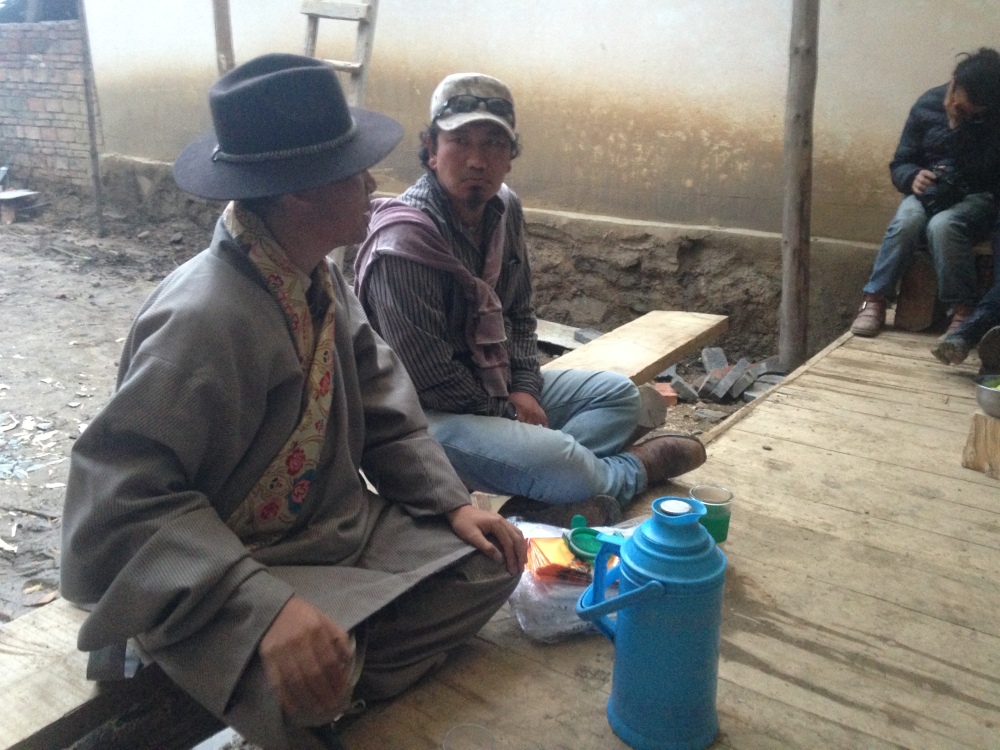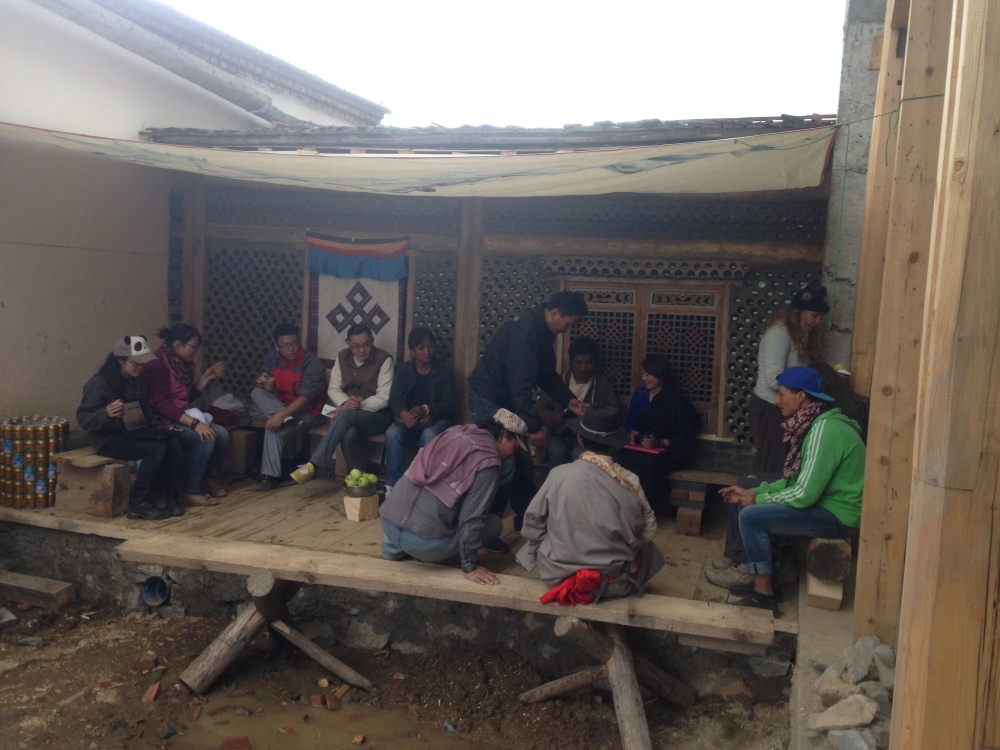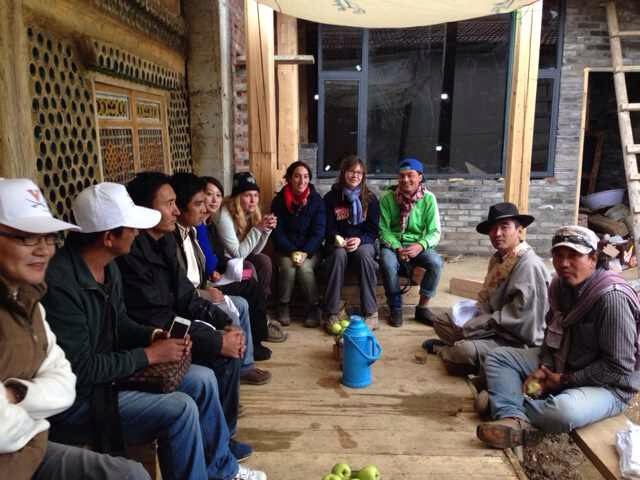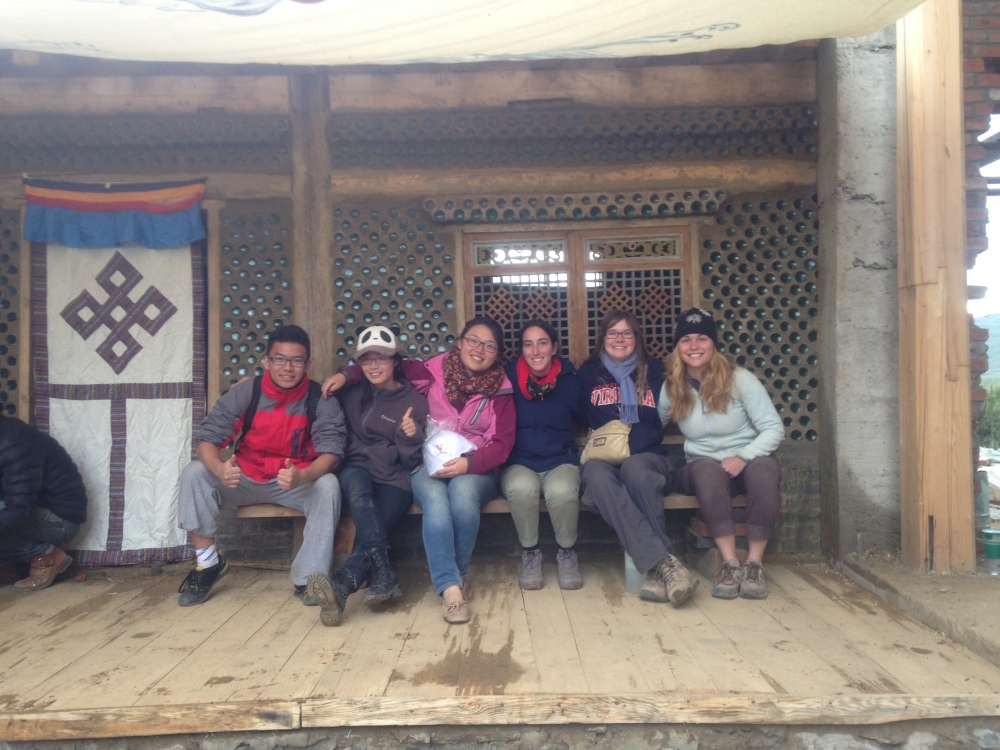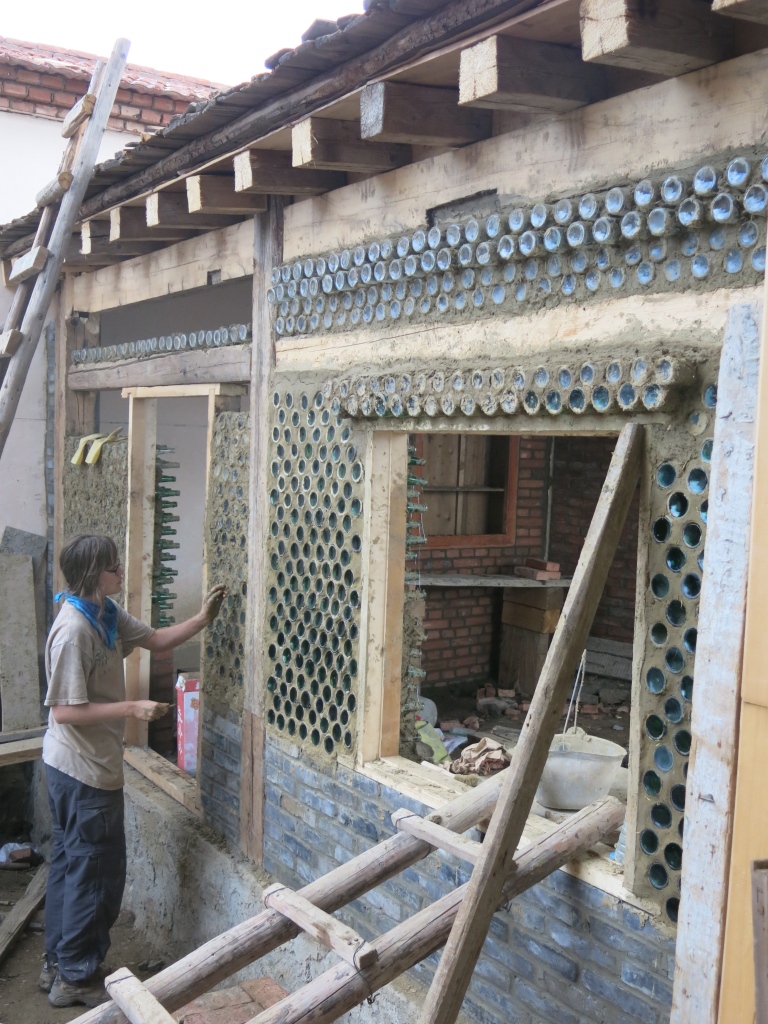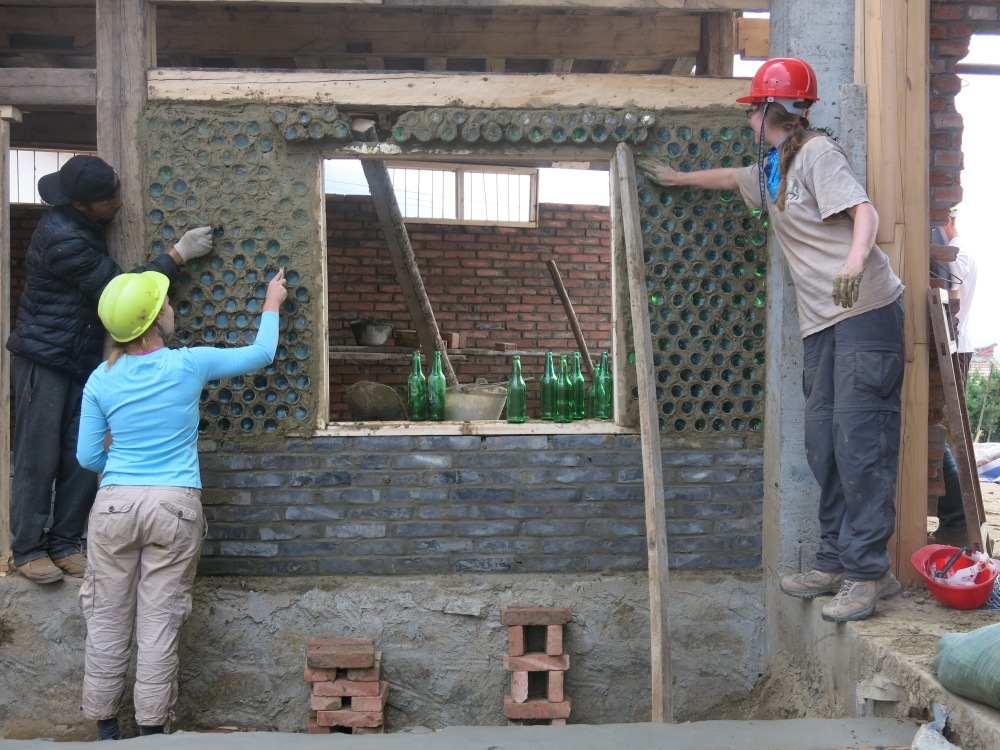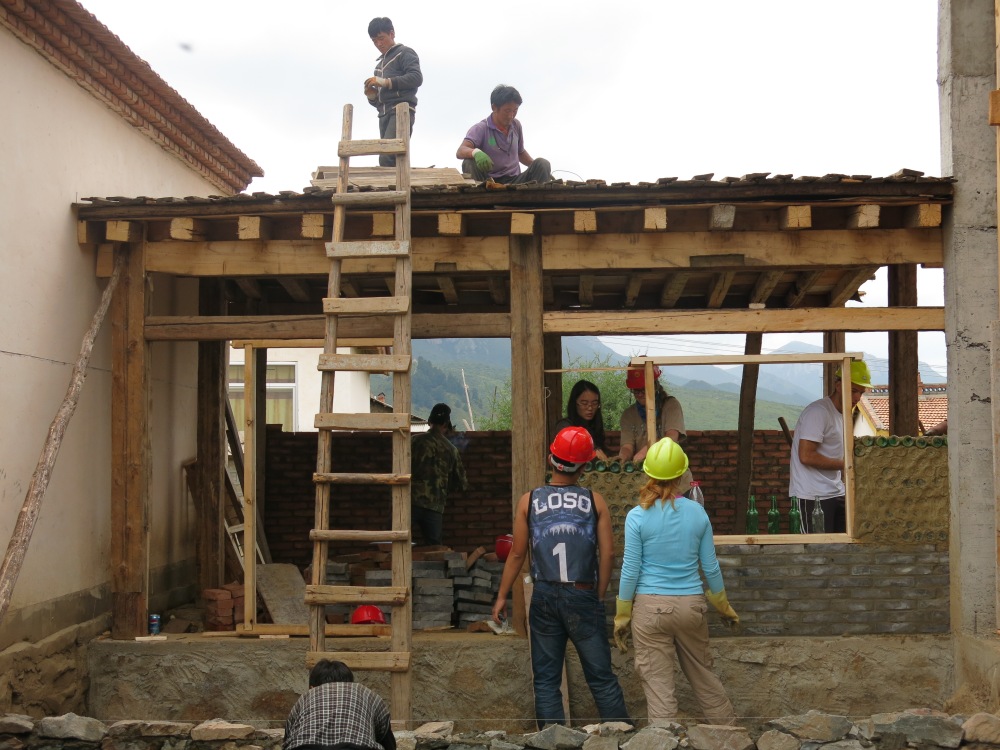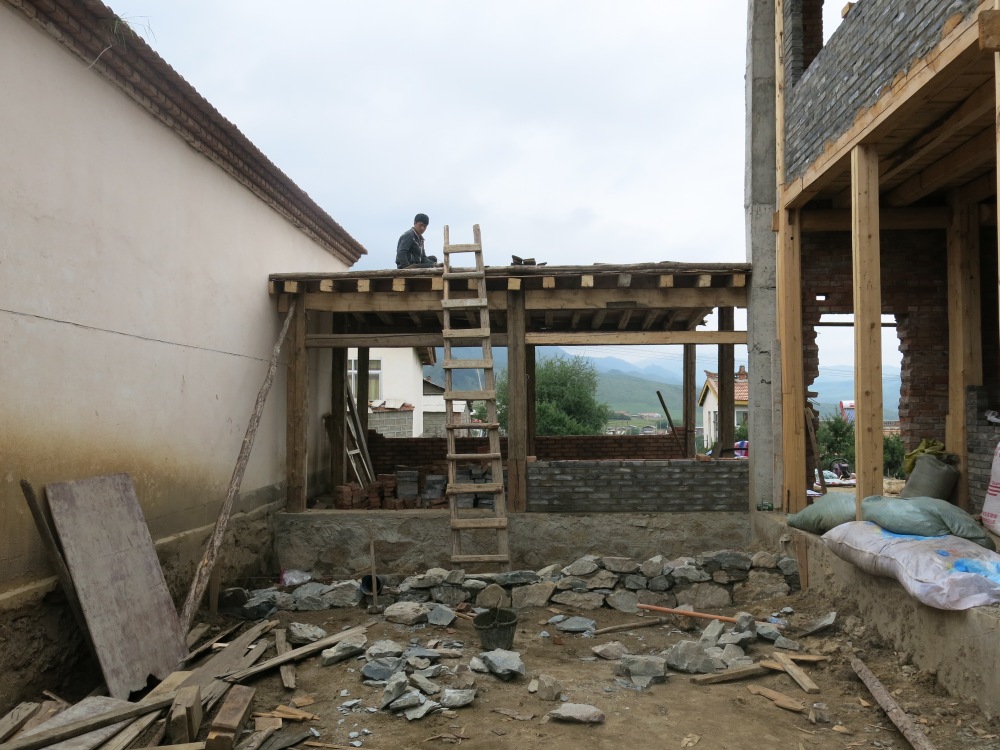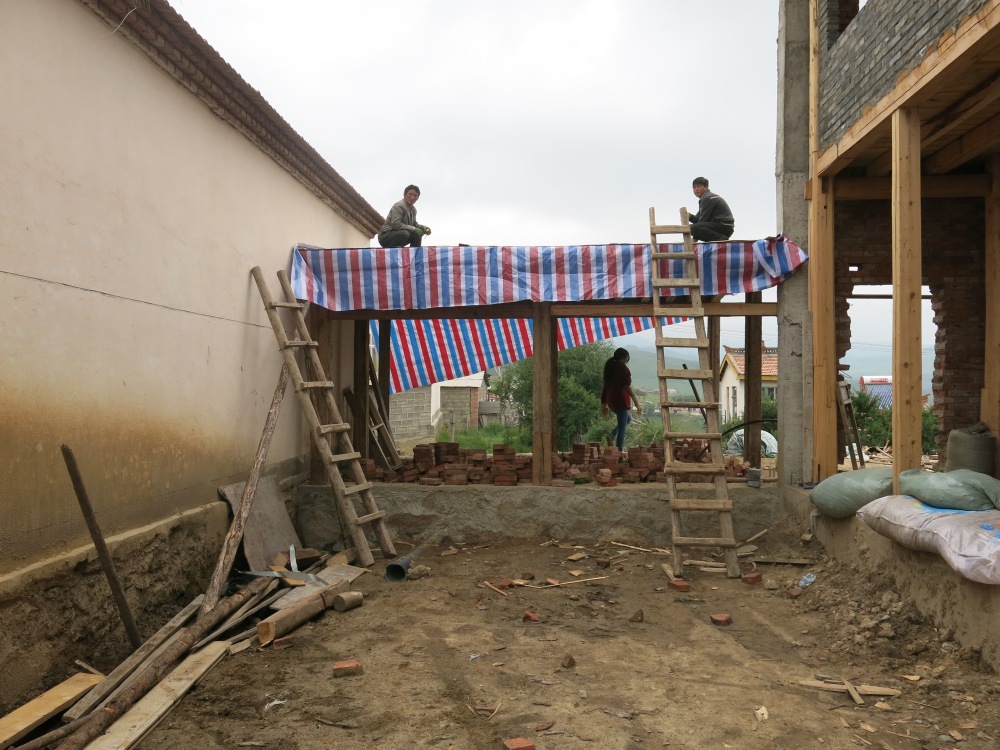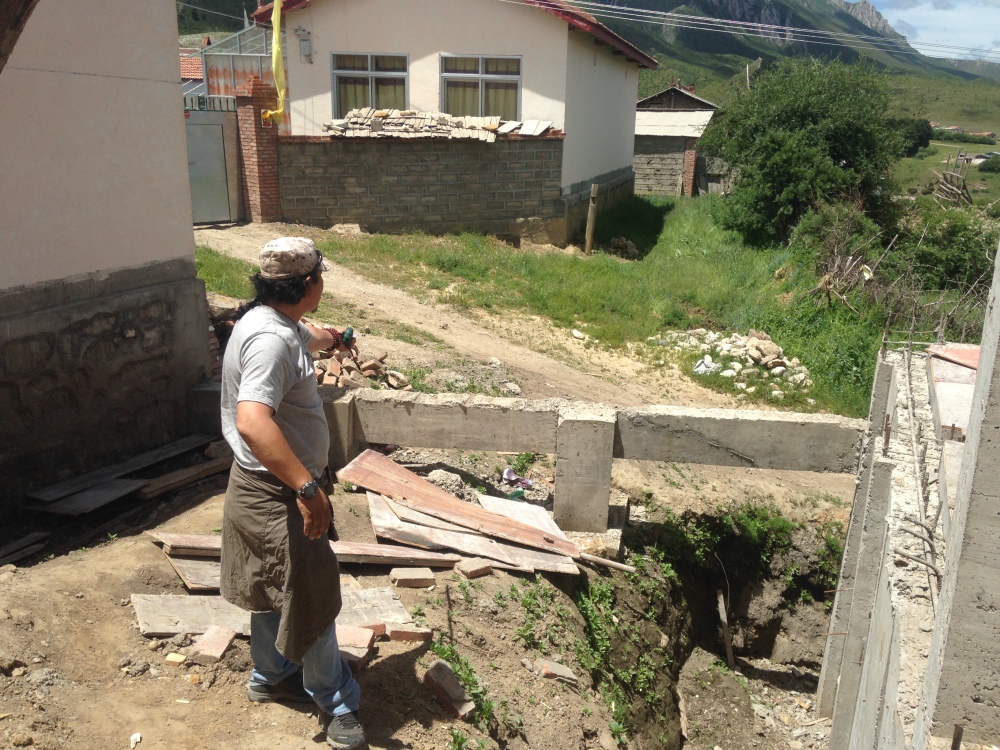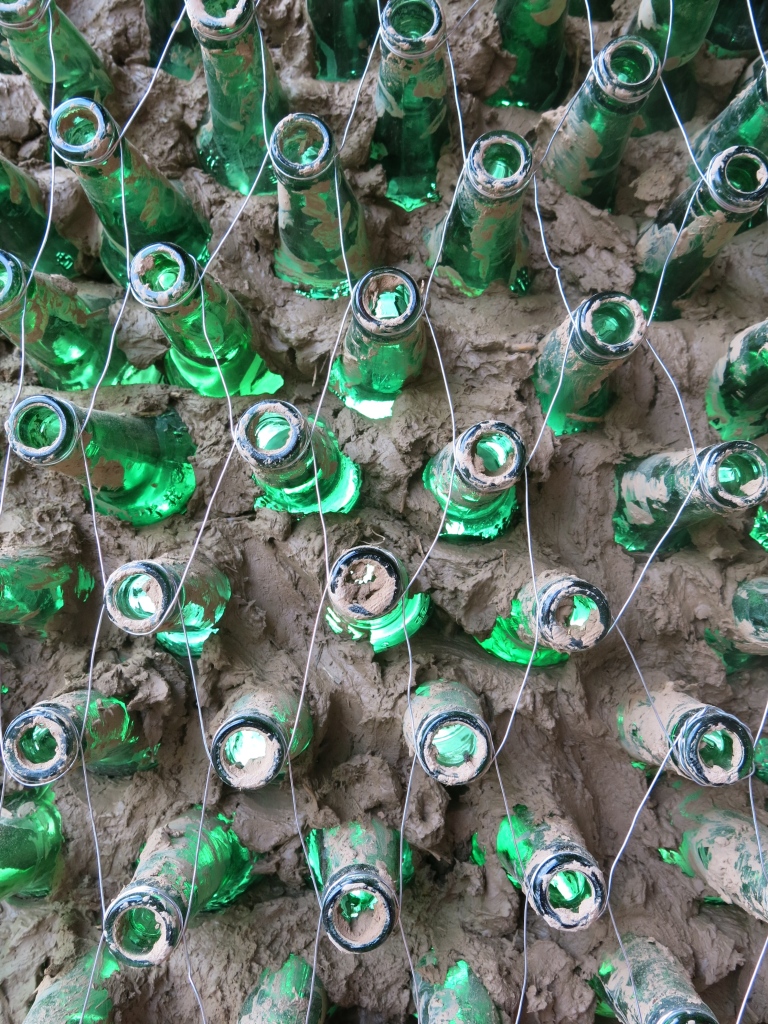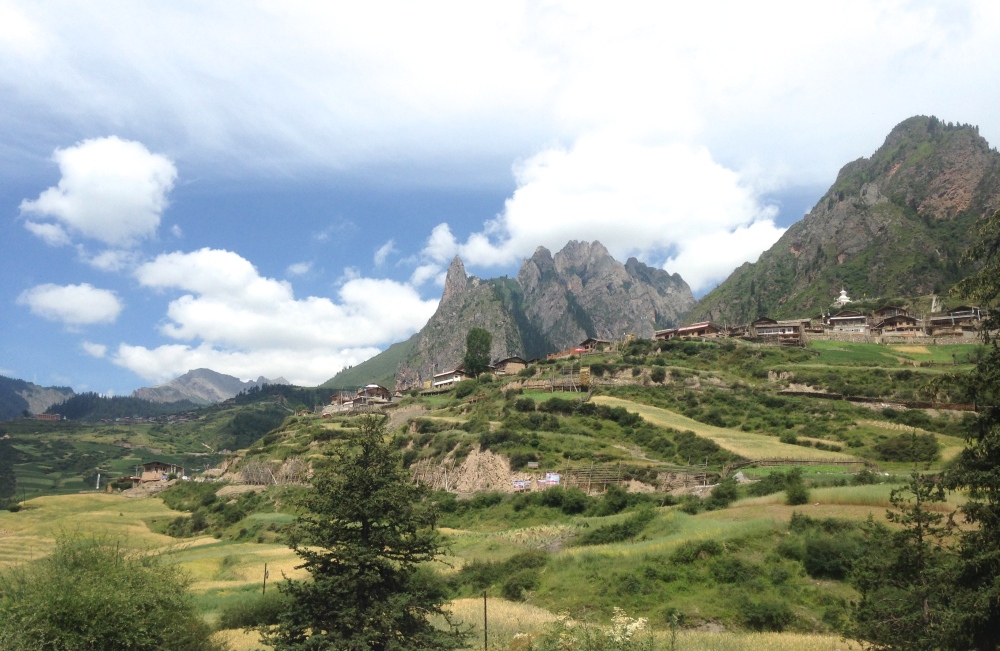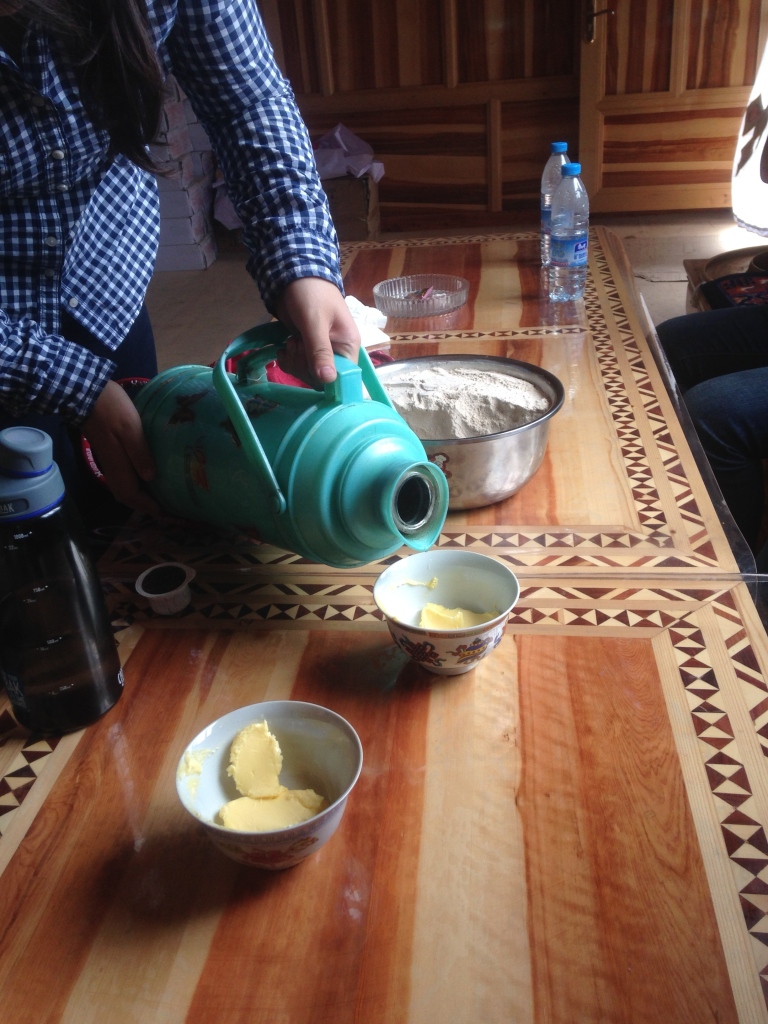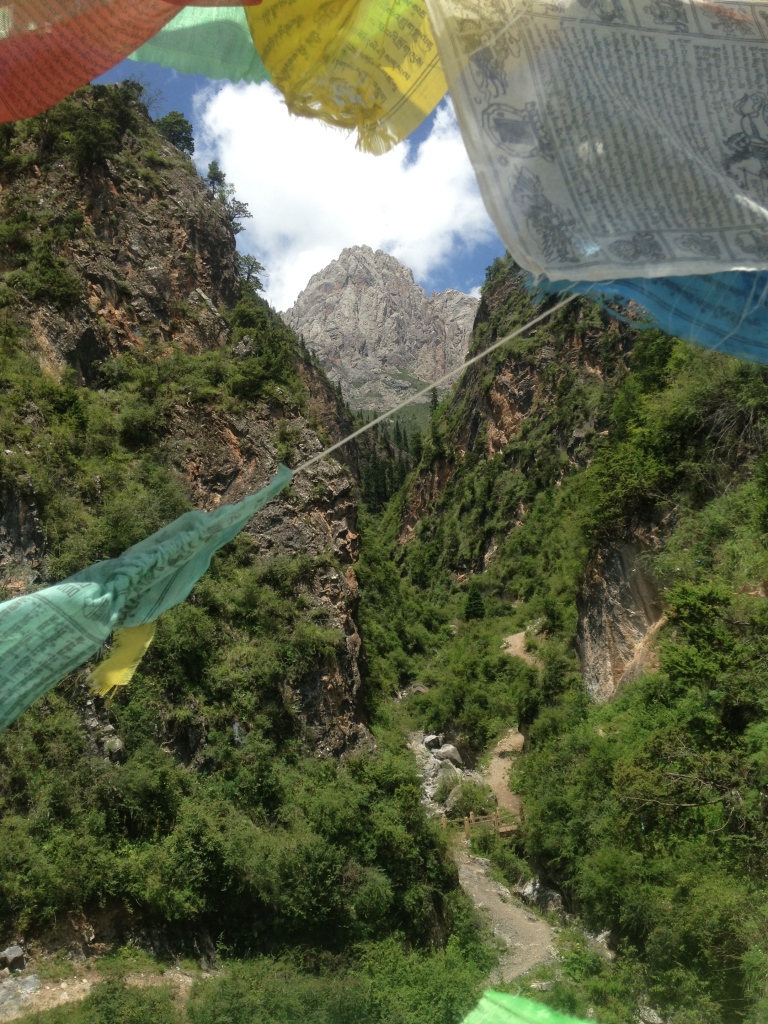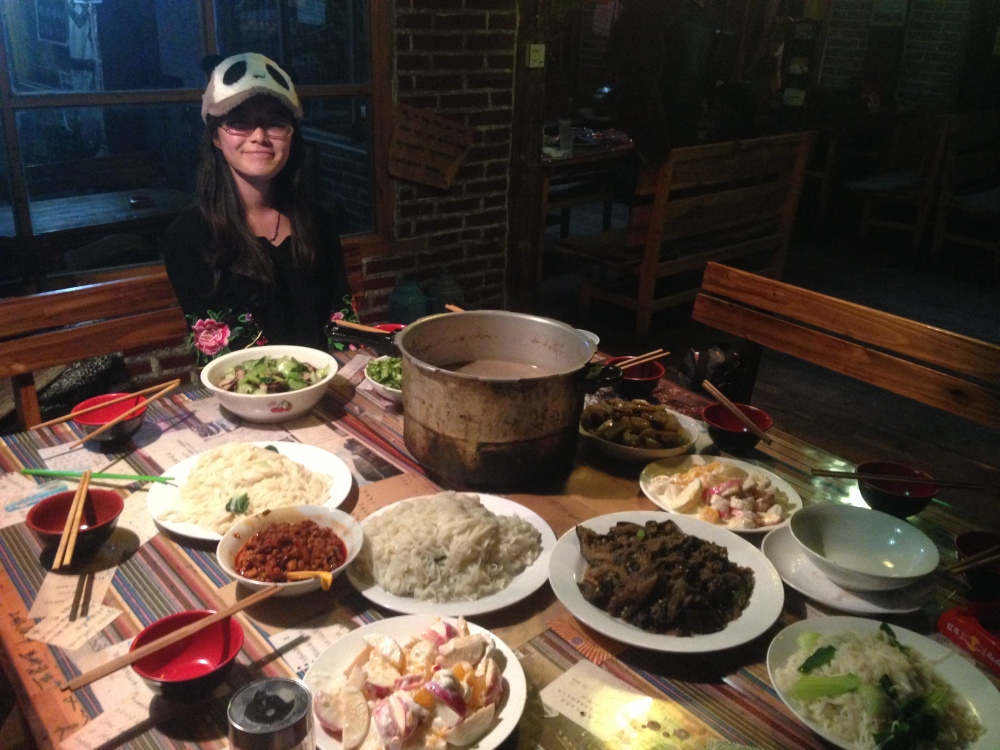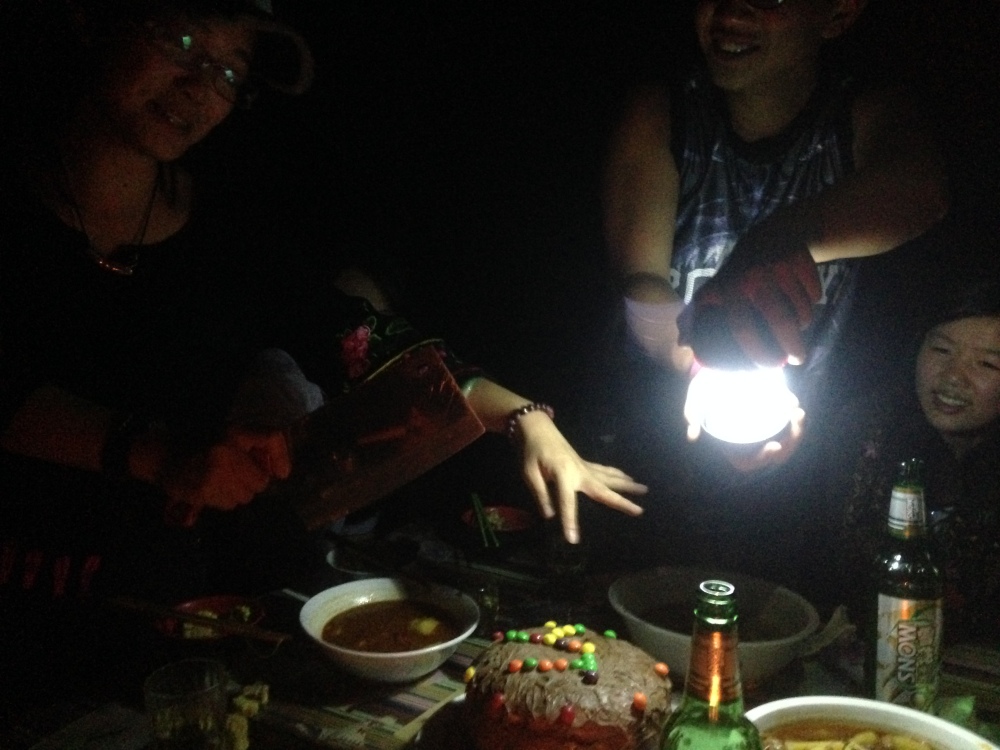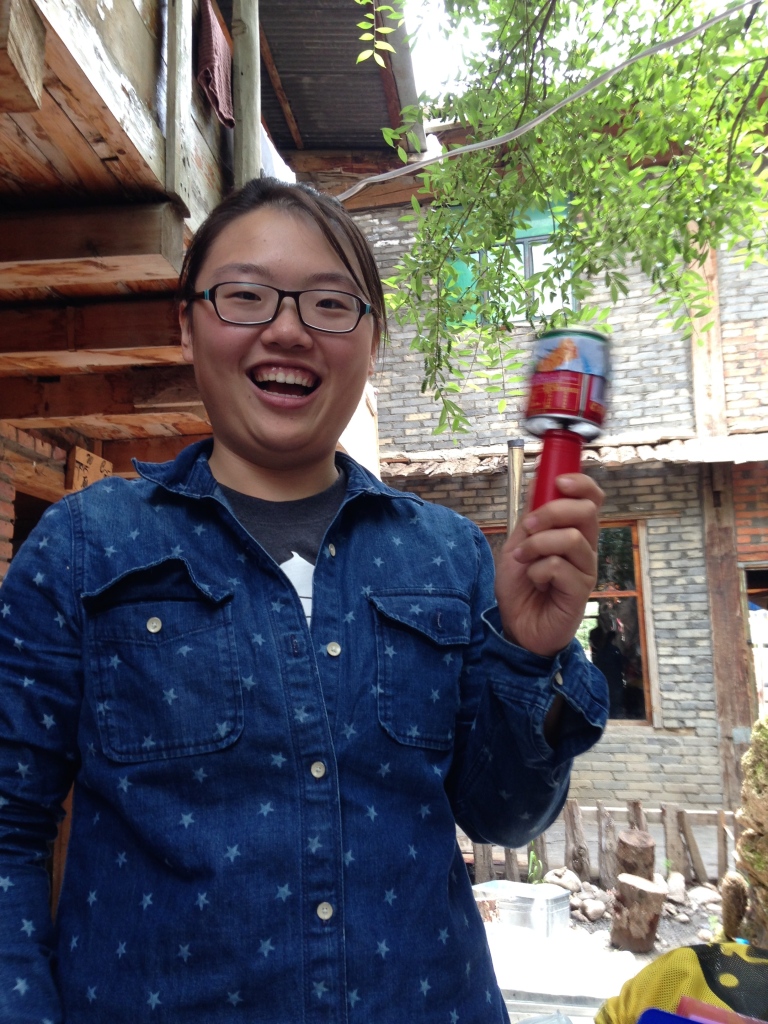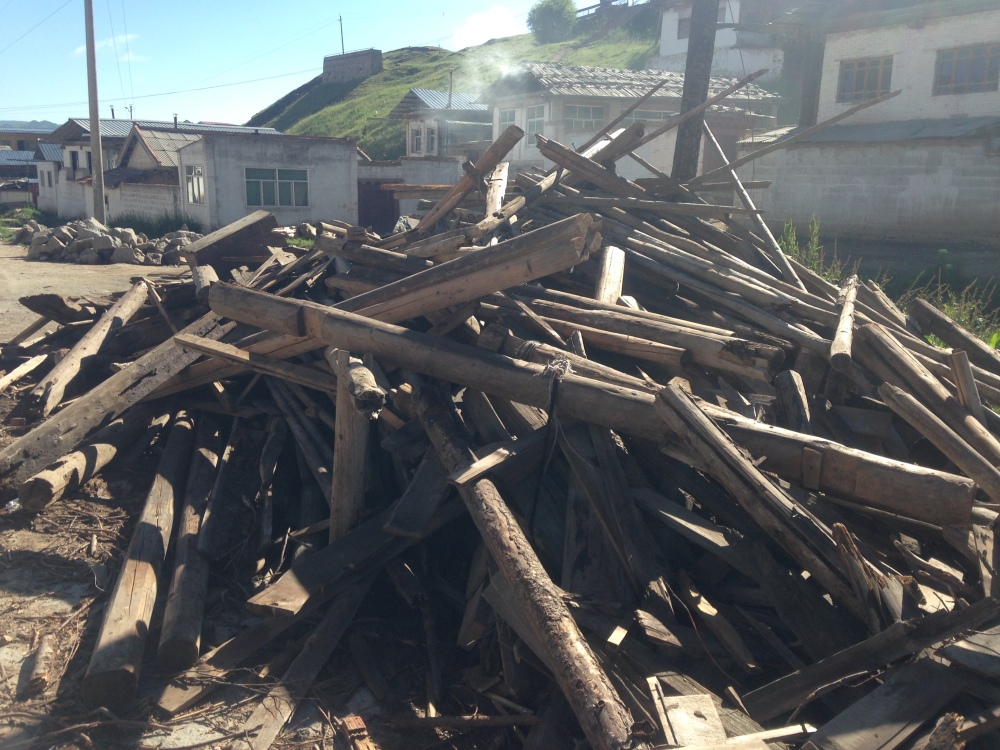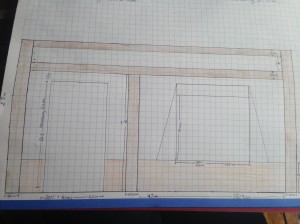
Planning:
It first started in Charlottesville when we were brainstorming ways to build bottle houses. We found lots of examples of houses made of bottles, both plastic and glass. We collected all of structural and aesthetic examples that we thought we might want to use once we got to Lhamo into a document. We weren’t sure how we would actually support the structure but we saw examples of pillars and foundations made out of tires, bottles, and mud mixtures. At first we thought we wanted to use plastic bottle bricks, which are plastic bottles filled with sand or plastic bottles smashed and molded into a brick. These are good options, and are often used on many structures that we saw. However, for aesthetic reasons we decided to stick to only glass bottles, narrowing our examples of how to build these houses.
We spent a day in Charlottesville prototyping different ways to layout the bottles. We weren’t sure how to make the mud mixture so we just estimated using cow manure and assumed that we would get a more accurate mixture once we were at our site. In one of our two prototypes we positioned the bottles vertically and the other horizontally. For the vertical prototype we had two posts and a wire screen which we could tie the bottles to the screen and the posts once they were stacked. It was time consuming to stack the bottles so that they looked straight and there were gaps between the bottles that created a depression once the mud layer covered the bottles. The other stacking mechanisms were alternating stacking and stacking the bottles one on top of the other. We found the alternating stacking to be the strongest. We waited a few days until they dried and then we stood on top of them. Ideally, we would have also put a waterproofing on and tried spraying it with water.
The Design:
We spent a lot of time digging around the Internet wondering how we would build the foundation and the frame, concerned with how the structure would stand. Luckily when we got to Lhamo, our community partner Palzang already had ideas of how the structure would be stable and still retain traditional architectural elements. It was decided that we would build a wooden frame, utilizing reused wooden pillars and a foundation made of stone and dirt. For us, it was essential that the structure had elements of traditional Tibetan architecture.
Traditional architecture contributes to the significance of our project. The purpose of the building looking traditional is to respect the cultural context our project as well as to restore an architectural craft, which is being depleted by quickly constructed concrete structures powered by rising tourism. Some of the traditional elements that we wanted to incorporate into the structure were including a layer of brick on the bottom of the building where the window would sit, having traditional framing around the windows created by the bottles, and a design between the top two pillows.
We knew we had access to materials to make a traditional mortar made out of yak dung, white soil, and cut up grasses. We also had access to old wooden pillars, bricks, and lots of trash. We also found out that we would have access to a carpenter, a brick layer, and the advice of a local architect. This helped form our decision-making process of what our building would be like.
After our initial meeting, we found out that we were expected to design the structure. This was a surprise to us since we thought we were just researching and prototyping. We had about a day to propose our first design for the structure. Drawing to scale on graph paper and coloring with pencils, we proposed a first design of the building and met with a local architect to see how well we were doing with the traditional elements. He advised us that we use only the same size bottles, that we fill in the inside wall with mortar so that the building can retain more heat, and that we use the bottles to create traditional designs.
Some questions still remained once we had designed the structure. For example, how would the windows and doors fit into the structure – would there need to be a wooden piece around the door that connected to the pillars?
